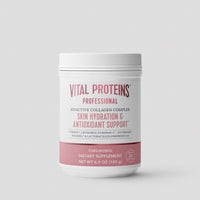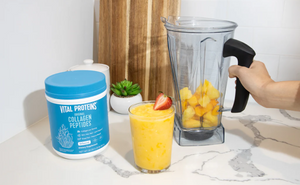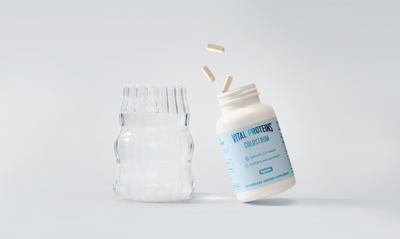Whether you're looking to boost your cardiovascular endurance, shake up your workout routine, or add a fun activity to your weekends, cycling can help you do just that.
"It's a great way to get cardiovascular exercise, build lower body and core strength and enjoy some outdoor time," says Jody Braverman, NASM-CPT, NASM-FNS. "If you're not up for the great outdoors, indoor cycling classes are a great option. They're fun and challenging, but any level of rider can participate."
Ready to come along for the ride? We tapped several fitness experts for their takes on why cycling will become your new favorite form of cardio. Plus, they share beginner tips that will make your first few rides a lot smoother. Consider their info your training wheels.

What are the benefits of cycling?
There's so much to love about cycling. In addition to providing you with nostalgic childhood memories and an eco-friendly mode of transportation, these benefits will make you want to hop on a bike ASAP.
1. It's one of the most exciting forms of cardio
Cycling may be a form of cardio, but the good news is it doesn't feel like time is dragging by (looking at you, elliptical).
That's because cycling is as fun as it is effective!
An hour of cycling can feel like 10 to 15 minutes, because you're experiencing new views and taking yourself on an adventure, Tommy Pederson, CPT and CEO of The Bodybuilding Authority tells Lively.
2. It's ideal for all ages and fitness levels
Cycling isn't just for young children or thrill-seeking adrenaline junkies. It's an exercise that's suitable for all ages and fitness levels, especially because of its low-impact nature.
"If you are coming to cycling at middle-age because of knee problems, or younger and looking for a new form of exercise or want to get healthier, cycling has benefits for all," explains Garret Seacat, C.S.C.S., USA Cycling Coach & Head Coach of Absolute Endurance.
These benefits range from increasing cardiovascular function to improving mental health, says Seacat.
Related Articles
3. It's a great endurance exercise
Cycling is a great low-impact, aerobic activity. It also strengthens your lower body, and believe it or not, your core. Aerobic exercise can help boost your cardio fitness. It'll help you build leg muscles—think quads and calves. Additionally, you'll need to have solid core strength to stay stable in the saddle.
Pederson adds that cycling can be used as both HIIT (high-intensity interval training) and LISS (low-intensity, steady-state) cardio during your exercise.
4. It's a social activity
Tired of working out alone? Cycling doesn't have to be a solo sport! Bike with friends and family or link up with local cycling groups to motivate you, keep you accountable, and provide camaraderie on the road, says Braverman.
What do you need to get started cycling?
First, you'll need the gear. The basics for outdoor riding include a bike (obviously), a helmet and training gear. First up is the bike, which you can purchase from a local cycling shop, who can help you get properly fitted with the correct bike. (Don't want to shell out big bucks? Pederson says that you can opt for a bike from Walmart or Target.)
Two common bike options you might run across during your search are a hybrid bike and a road bike. A hybrid has thicker tires than a road bike, says Braverman and is made for varied terrain.
"Hybrid is better if you're going to be riding on more varied terrain such as dirt, gravel and bumpy city streets," Braverman explains. Meanwhile, road bikes are made for smooth pavement rides, such as running errands in the city or driving to and from work.
Next up is training gear. Just like you need to fuel your workout like an athlete (Vital Performance™ can help!) you need to dress like one, too. This means wearing good-quality bike shorts or bibs to make sitting in the saddle more comfortable. "In all my time as a cycling coach, I have never heard from anyone that was upset they spent too much on shorts," Seacat says, adding that a good pair costs around $100.
Finally, when it comes to your shoes, you don't have to grab anything fancy. Just use some athletic shoes with sturdy soles, says Braverman. Or, you can opt for cycling shoes with clips. Indoor cycling is another story, especially if you're taking a class. "Studios will often provide shoes that clip into the pedals, so all you need are some comfortable exercise clothes," she says.

How long should you ride for?
This answer is going to look a lot different for everyone. And that's okay. Seacat recommends that beginners start with two to three 30-minute rides a week. You can slowly increase the length of the rides up to an hour, he says. Natasha Funderburk, NASM-Certified Personal Trainer, Certified Nutritionist, Behavior Change Specialist, agrees, adding that she typically advises clients to do start with rides that are around 20 minutes.
"You likely have never used some of the muscles involved in cycling and just as importantly, likely never have extended contact with your pelvis and hands in this way. Give your body some time to adapt to the new sport," Funderburk says.
A great way to start is with short rides around your neighborhood. "I recommend just starting on a park trail by your house, or going through the neighborhood on your bike," says Pederson. Always know the laws of the roads and keep an eye out for any rough terrain. The farther you bike – and the more amazing sights you’ll see – the more you’ll feel ready to explore.
When should you increase the length of time biking?
Whenever you're starting a new fitness regime, you can expect a few bumps in the road. Remember: working your way up to longer rides takes time.
"If you're sweating heavily or losing your breath right away, you're probably going too fast," says Pederson. You can also focus on heart rate training or rate of perceived exertion (RPE), where your perceived intensity is measured on a scale of 1–10.
Once you build up your cardio and endurance, you can start going for those big rides. For this, keep the focus on adding minutes or miles with each ride, adds Funderburk. Keep this up consistently enough and soon, you'll be like a seasoned cyclist who knows all the best trails in your area!
Vital Note: This article has been made available for informational and educational purposes only. It is not intended to be a substitute for professional medical advice, diagnosis, or treatment. Always seek the advice of your physician or another qualified health provider with any questions you may have regarding a medical condition. Your licensed healthcare professional can best provide you with the diagnosis and treatment of any medical condition and assist you as well in deciding whether a dietary supplement will be a helpful addition to your regimen.













